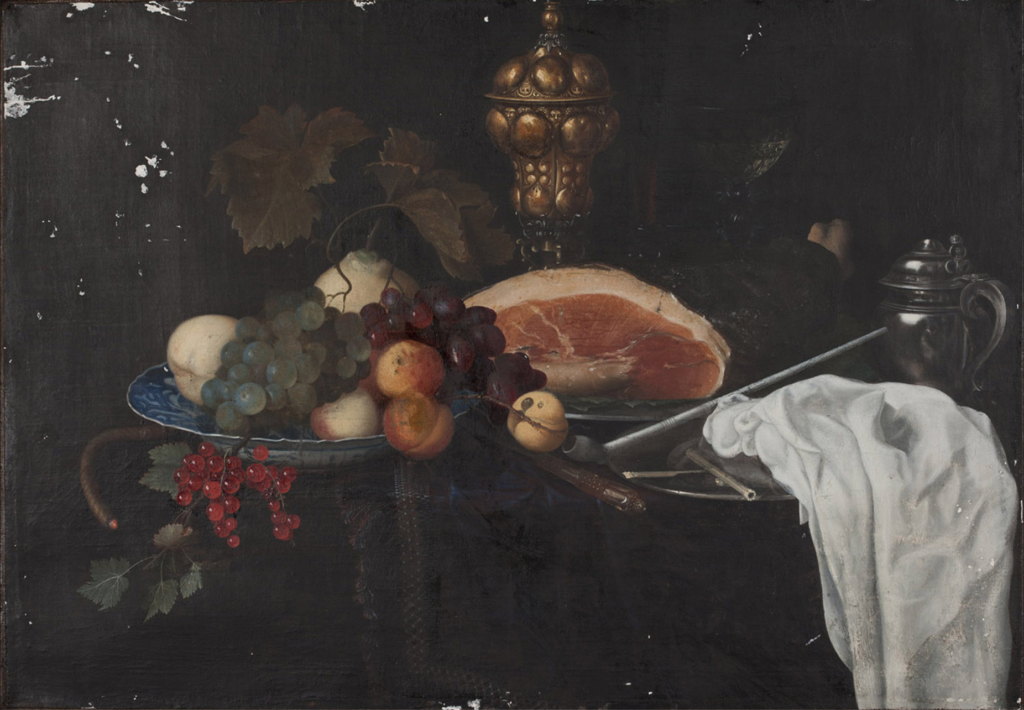After taking copious notes and photos during the documentation step, conservators turn to cleaning the piece and assessing damage beneath the top layers. Most art ages and weathers with time, getting dirtier and more worn out. This can make the painting appear darker, more faded, or even cause permanent damage to the paint underneath. Cleaning is essential to protecting the aesthetic value of the piece, the historical context of the piece, and to just plain help preserve the work.
Those worn and damaging layers take many different forms. They might be something like a varnish, found on many paintings and murals, or a patina that has developed along the cracks of a metal statue.
Varnishes are originally applied for protection and aesthetics, but over time may take damage from weather, light, animals, and any other conditions of their environment. One of the most common problems with varnish is how it yellows over time. It can obscure the painting beneath it, and so should be fully removed from the paintings to better see the original work and the actual condition of the piece.

Maria van Oosterwyck. Dutch, ca. 1660-1690
This painting from the Smith College Museum of Art has been fully cleaned. Once the varnish layer is removed, any damage to that varnish, discoloration, and previous conservation attempts are also removed. Some patches are spaces where the artist or other owners might have painted over the varnish as a quick fix. Some patches might indicate where previous conservators worked in easily-removable mediums. Still, other patches accumulate from the normal wear and tear of abrasive materials, breaking apart the fragile surface of the painting in a natural and unavoidable way.
Despite the damage, this cleaned painting no longer has any protective layers preventing the conservator from working, so each worker can now safely start to move forward and prepare to actually modify and conserve this piece.